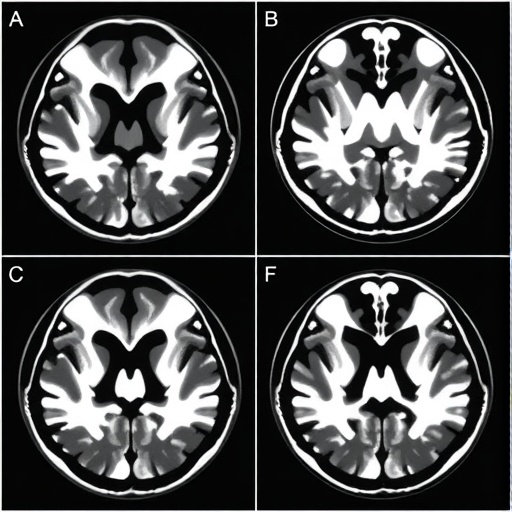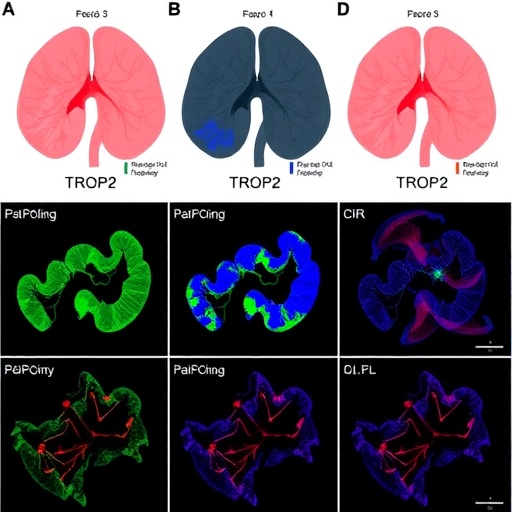In a groundbreaking study led by Della Valle and colleagues, the intricate patterns of head injuries in infants resulting from low-velocity accidental trauma have been meticulously examined. The research, which is set to be published in the esteemed journal Pediatric Radiology in 2025, aims to shed light on a critical area of pediatric medicine that has often been overlooked. Understanding the specific computed tomography (CT) patterns associated with these injuries could revolutionize treatment protocols and improve prognosis for affected infants.
Infants, due to their unique physiological characteristics and cerebral development, are particularly vulnerable to head injuries from seemingly minor accidents. These low-velocity events can occur in a myriad of everyday scenarios, such as falls from a crib or being dropped during care. Such incidents may not appear severe at the outset; however, the implications for the delicate structures within an infant’s head can be profound. Della Valle’s research provides an authoritative look into how these injuries manifest on CT scans, helping caregivers and healthcare professionals better assess and respond to potential trauma.
The study utilized a robust sample of CT scans from infants who had experienced these types of accidents, meticulously analyzing each case to identify commonalities in presentation. By collating data from various clinical presentations, the authors aimed to delineate clear CT patterns associated with low-velocity head trauma. This was achieved through a multifaceted approach, incorporating both qualitative and quantitative analyses to illuminate the diagnostic significance of different findings.
.adsslot_H9glQiGWFE{width:728px !important;height:90px !important;}
@media(max-width:1199px){ .adsslot_H9glQiGWFE{width:468px !important;height:60px !important;}
}
@media(max-width:767px){ .adsslot_H9glQiGWFE{width:320px !important;height:50px !important;}
}
ADVERTISEMENT
One of the pivotal findings of this research is the identification of specific radiological features that tend to recur in cases of low-velocity head injuries in infants. Familiarity with these patterns enhances the diagnostic acumen of radiologists and pediatricians alike, enabling them to make more informed decisions when evaluating an infant’s CT images. This study highlights the need for specialized training for medical professionals who interpret imaging studies in pediatric populations, focusing on the distinctive aspects of infant anatomy and pathology.
The research also emphasizes the role of timely diagnosis and intervention. Early detection of internal injuries can significantly affect outcomes for affected infants. This insight could lead to enhanced guidelines for monitoring and managing head trauma from minor falls, ultimately reducing the risk of long-term complications. The authors stress that an awareness of the common patterns observed in imaging can serve as a crucial tool in emergency settings, allowing for prompt and appropriate care.
Another crucial aspect of the study is its contribution to the broader discourse on pediatric safety. With increasing awareness of head injuries and traumatic brain injuries in young children, this research underscores the importance of preventive measures. Parents and caregivers are often unaware of the risks associated with common activities such as play, particularly when involving heights. By elucidating the types of injuries that can occur even in low-impact scenarios, the study raises critical awareness about the need for vigilance and safety precautions.
In addition to its immediate clinical implications, the findings from Della Valle and his team may serve as a springboard for future research initiatives. Exploring the long-term consequences of low-velocity head trauma could provide deeper insights into developmental outcomes for affected children. Researchers might investigate subsequent cognitive and motor functions, as well as the psychosocial implications of experiencing a head injury during infancy.
Furthermore, the application of advanced imaging technologies, including MRI and diffusion tensor imaging, could be explored in future studies to provide a more comprehensive understanding of brain injuries in young patients. Della Valle’s work signifies a stepping stone into a broader investigative landscape that could yield profound enhancements in pediatric trauma care.
As pediatric radiology continues to evolve, the integration of findings from this study could promote a multidisciplinary approach to infant healthcare. Collaboration among pediatricians, radiologists, and emergency care personnel will be essential to develop protocols that not only address immediate injury management but also support ongoing monitoring and developmental assessments.
There is much to gain from disseminating the knowledge gleaned from this study across various platforms. Educating the community about the risks of head injury in infants can empower parents with the information they need to advocate for their child’s health. As advocates for pediatric safety work to raise awareness, studies like Della Valle’s will serve as critical resources.
Finally, the study illustrates the paramount importance of continuous research in uncovering the nuances of infant health and medicine. It drives home the notion that even the most innocent-seeming circumstances can carry risks. As medical professionals apply these new insights into their practice, the ultimate goal remains unchanged: to safeguard the health and well-being of the youngest and most vulnerable members of society.
In conclusion, Della Valle and his collaborators have embarked on an essential journey to illuminate the often murky waters of pediatric head trauma. Their findings promise to inform clinical practices, influence policy changes, and ultimately, foster a healthier, safer environment for infants everywhere. This study represents a critical contribution to pediatrics and radiology, paving the way for further inquiry and intervention strategies in the field of infant health.
Subject of Research: Head injury patterns in infants following low-velocity accidental trauma using CT imaging.
Article Title: What are the computed tomography patterns of head injury following low-velocity accidental head trauma in infants?
Article References:
Della Valle, V., Vande Perre, S., de Suremain, N. et al. What are the computed tomography patterns of head injury following low-velocity accidental head trauma in infants?.
Pediatr Radiol (2025). https://doi.org/10.1007/s00247-025-06348-6
Image Credits: AI Generated
DOI: https://doi.org/10.1007/s00247-025-06348-6
Keywords: Pediatric head trauma, low-velocity accidents, CT patterns, infant safety, trauma diagnosis.
Tags: accidental head injuries in infantsassessing trauma in infantscerebral development and head injuriesCT scan analysis in pediatricsDella Valle study on infant injuriesimplications of minor accidents on infantsimproving prognosis for infant head traumainfant head injury patternslow-velocity trauma in infantspediatric radiology researchtreatment protocols for infant traumaunderstanding infant brain injuries





